
Overview
The article addresses the prevalent errors that e-commerce businesses commit regarding trusted badges, which can significantly diminish their conversion rates. It asserts that the use of unauthorized, unverified, or poorly positioned trust badges can erode consumer confidence, leading to substantial transaction abandonment. Statistics reveal that a lack of visible trust symbols prompts 61% of consumers to abandon their purchases. This underscores the critical importance of properly utilizing trust badges to enhance consumer trust and drive sales.
Introduction
The trusted badge has emerged as a pivotal element in the e-commerce landscape, serving as a beacon of safety and reliability for consumers navigating the complexities of online shopping. Research indicates that sites adorned with these badges can experience conversion rates skyrocketing by up to 42%. This statistic underscores the necessity of strategic implementation for direct-to-consumer brands intent on building trust and driving sales.
However, the journey to effectively utilizing trust badges is fraught with potential pitfalls—missteps that could not only erode customer confidence but also result in substantial revenue losses.
How can brands sidestep these common errors and ensure that their trust badges serve their interests rather than undermine them?
Parah Group: Optimize Trust Badge Strategies for Higher Conversions
The trusted badge serves as a critical component of e-commerce sites, acting as a visual indicator of safety and reliability that significantly influences consumer behavior. Research indicates that forms featuring a trusted badge can achieve up to 42% higher conversion rates than those without, underscoring the necessity for DTC brands to enhance their strategies involving the trusted badge to bolster customer confidence and drive sales. Notably, 61% of customers abandon transactions if they do not encounter a trusted badge on a site, highlighting the indispensable role this trusted badge plays in the purchasing process.
The effective application of the trusted badge has yielded remarkable results. For instance, Holabird Sports experienced a 16% increase in conversions after integrating the trusted badge from TrustedSite, illustrating the tangible benefits of strategic emblem usage. Additionally, brands that thoughtfully select and position a trusted badge—such as SSL certificates and payment method logos—on product and checkout pages can alleviate customer concerns regarding data protection and payment safety.
Experts in the e-commerce sector emphasize the significance of verification symbols. SaleHoo Group notes that 'the most significant verification symbols for your store are those focused on website cybersecurity and secure checkout procedures.' Furthermore, 48% of online shoppers view a trusted badge as a vital factor in evaluating a website's reliability. This perspective is supported by industry leaders who advocate for the careful selection of symbols that align with customer expectations and industry standards. For example, utilizing no more than three insignias in a single area can prevent overcrowding and maintain a professional appearance.
As consumer confidence becomes increasingly crucial in the competitive online shopping landscape, companies must prioritize the implementation of a trusted badge as an effective trust symbol. Regularly verifying credential expiration dates is essential to sustain credibility and trustworthiness. By leveraging data-driven insights and understanding consumer psychology, DTC companies can cultivate a reliable online environment that not only enhances conversion rates but also fosters enduring customer loyalty.
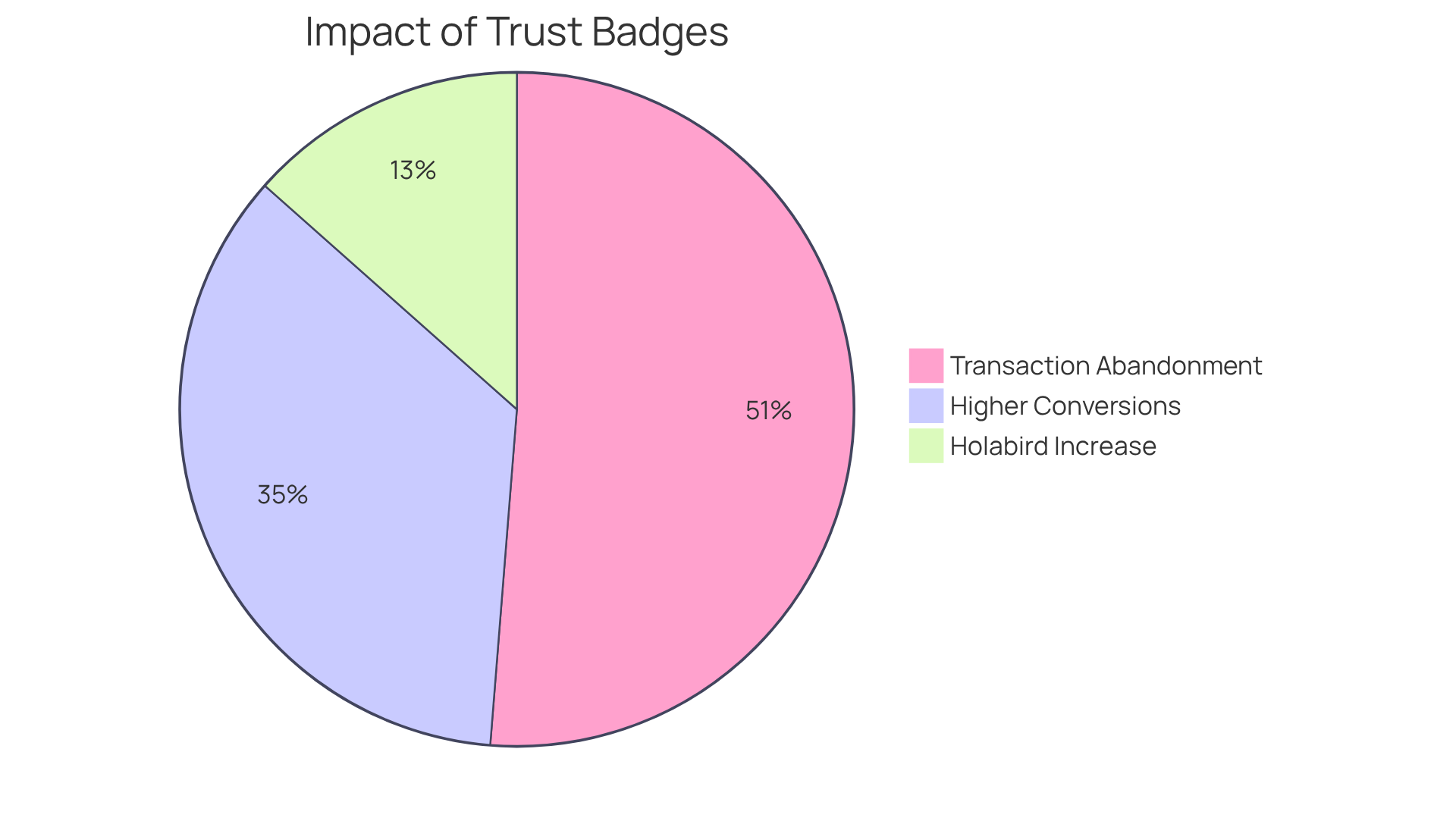
Mistake #1: Displaying Unauthorized Trust Badges
Displaying a trusted badge without authorization can severely undermine a company's credibility and lead to significant legal repercussions. In today's marketplace, customers prioritize transparency and authenticity; therefore, employing a trusted badge that has not been genuinely earned can foster distrust and skepticism. For instance, companies that misrepresent their affiliations or endorsements risk incurring both civil and criminal penalties under federal law, which may include substantial fines and possible imprisonment. The improper use of certification symbols not only diminishes consumer trust but can also inflict reputational damage that is challenging to repair.
A pertinent example involves a company that faced legal action for exhibiting a government seal without authorization, resulting in considerable fines and a damaged reputation. Legal experts emphasize that businesses must ensure that the trusted badge and all other certification symbols displayed on their platforms are obtained through legitimate means and accurately reflect genuine endorsements. Establishing internal policies, educating employees on the legal ramifications of using government symbols, and performing regular audits can effectively prevent unauthorized usage, thereby protecting the brand's integrity and its relationship with consumers. Ultimately, a well-informed approach to verification symbols, such as the trusted badge, is crucial for sustaining credibility and avoiding legal complications in the competitive e-commerce landscape.
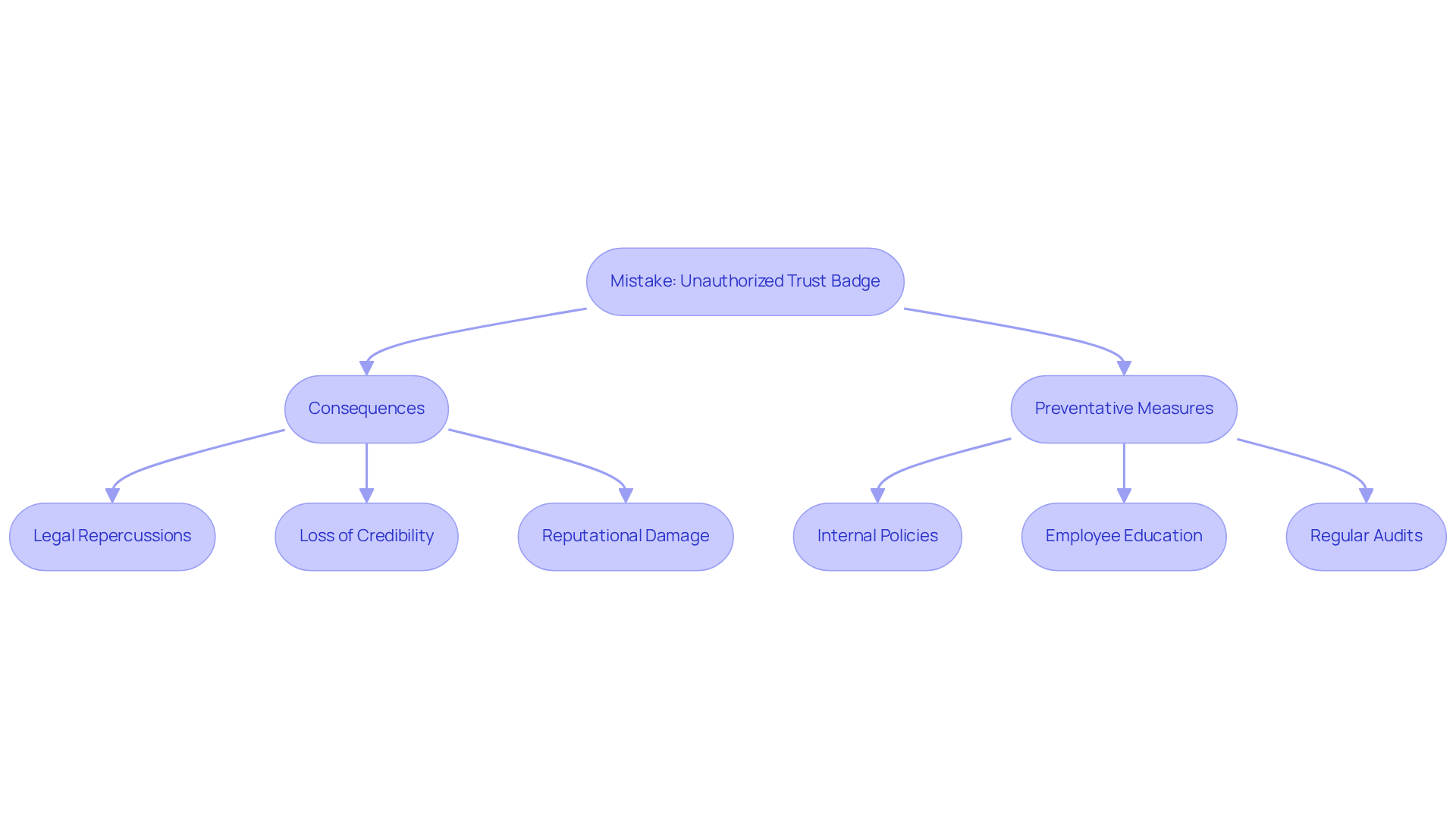
Mistake #2: Using Unverified Trust Badges
Utilizing unverified trust symbols can indeed backfire; consumers may perceive them as attempts to deceive. It is imperative for brands to employ a trusted badge that is recognized and verified by reputable organizations. This practice not only enhances credibility but also provides buyers with the assurance they need regarding the safety and authenticity of their shopping experience, which is reinforced by the trusted badge.
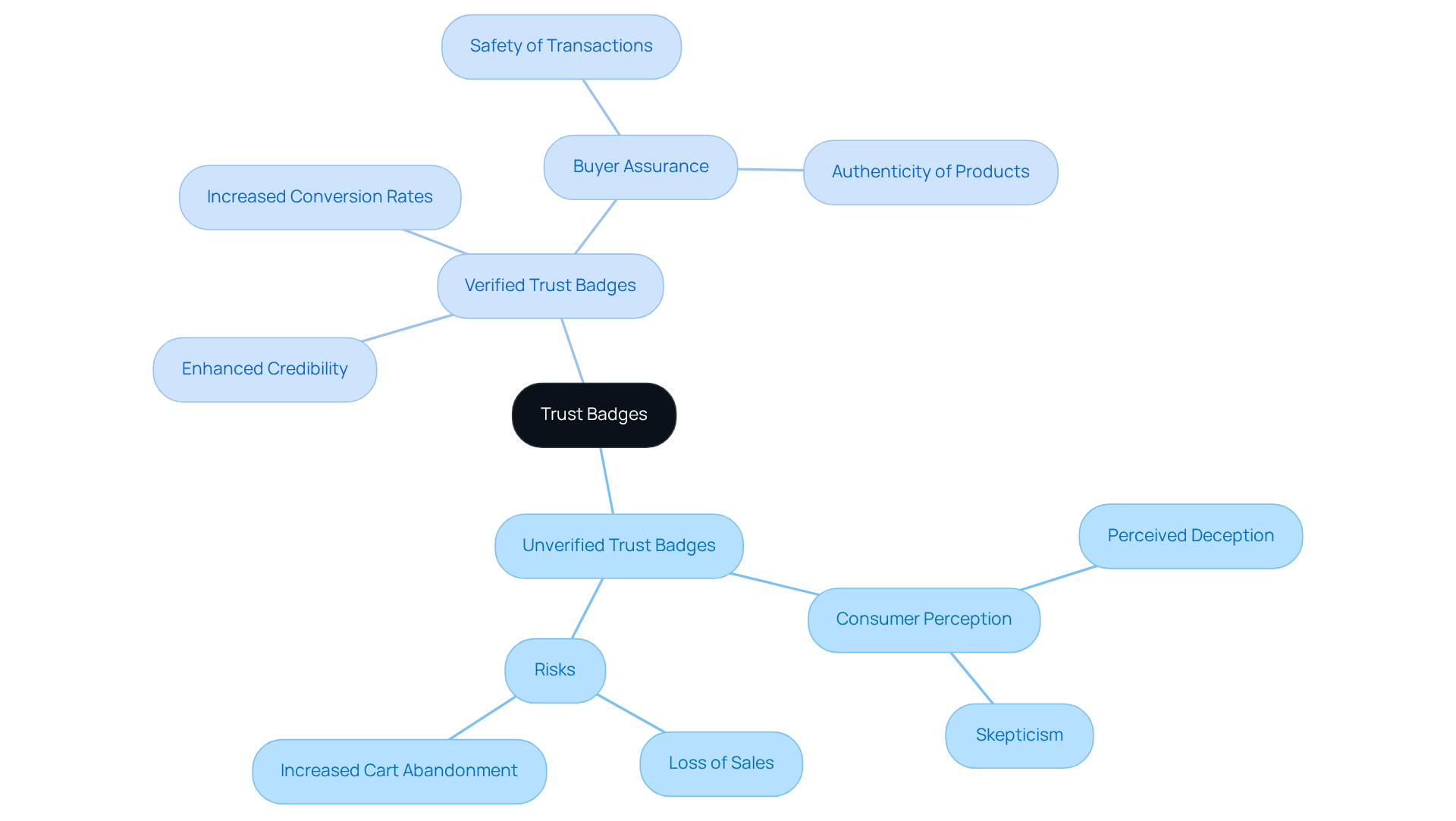
Mistake #3: Failing to Link Trust Badges to Providers
Failing to connect verification symbols to their corresponding suppliers can significantly diminish their impact. Clickable verification symbols act as a trusted badge that empowers customers to confirm authenticity, thereby strengthening reliability and credibility. For instance, brands that have integrated interactive icons directing users to verification sources have witnessed a 42% increase in conversions, underscoring the tangible benefits of this approach.
Research indicates that 25% of online shoppers abandon their carts due to a lack of confidence in the site's payment security, highlighting the critical importance of transparency in the purchasing process. UX/UI specialists emphasize that enhancing confidence through clickable symbols not only boosts customer assurance but also fosters higher conversion rates.
A case study involving a $30M clothing label demonstrated that strategic website enhancements, including assurance symbols, contributed to a 35% increase in conversion rates. Kate Williams notes, "Presenting them efficiently on your website can be a strong method to gain consumer confidence and enhance awareness and reputation."
By ensuring that all assurance symbols are clickable and link to reliable verification sources, brands can create a more trustworthy shopping environment with a trusted badge. Furthermore, regular checks of identification validity and connections are essential to maintain client confidence.
Brands must also guarantee that icons are clear, adequately sized for easy tapping, and responsive across all devices to maximize their effectiveness, ultimately driving sales and fostering client loyalty. To achieve this successfully, brands should routinely review their assurance symbols and ensure they are prominently displayed on key pages, such as the checkout and product detail sections.
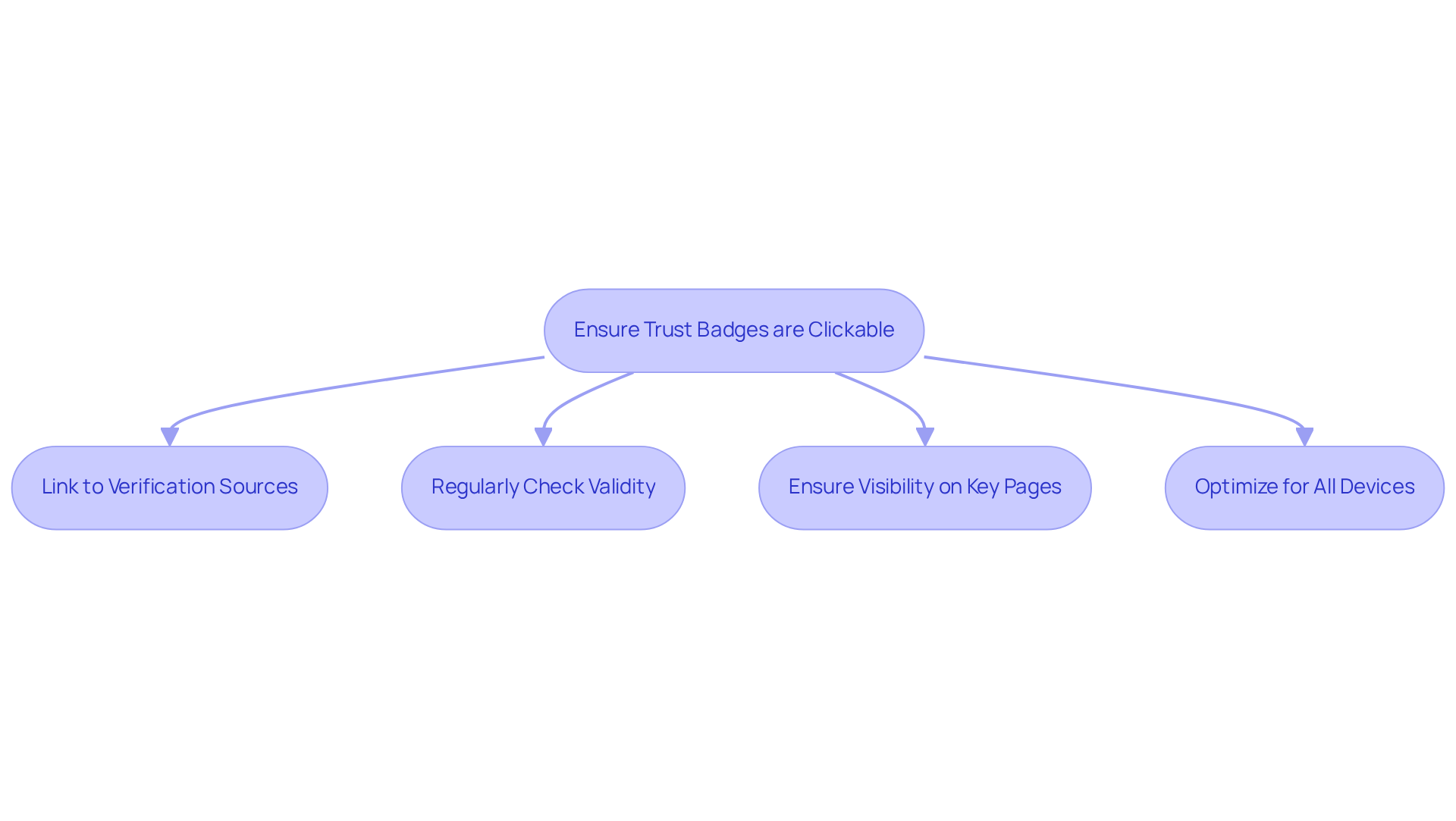
Mistake #4: Using Ambiguous Trust Badges
Utilizing unclear trust symbols generates uncertainty among clients, thereby weakening their impact. The trusted badge must clearly communicate its significance, such as security, satisfaction guarantees, or third-party endorsements. For example, well-recognized security emblems like the Norton seal instill confidence in online shoppers regarding the safety of their information. Transparent communication enables clients to grasp the worth of the symbol, thus enhancing their chances of conversion.
Furthermore, employing unauthorized assurance symbols can lead to buyer skepticism and undermine confidence, complicating the purchasing process. Branding authorities emphasize that transparency is essential; as one expert remarked, 'Establishing online confidence depends on reliability, credibility, integrity, and a smooth user experience.'
By ensuring that assurance symbols are clear and informative, companies can foster increased customer confidence and boost conversion rates by utilizing a trusted badge. Moreover, conducting A/B testing to assess the impact of credibility indicators provides practical insights, enabling companies to enhance their reliability signals efficiently.
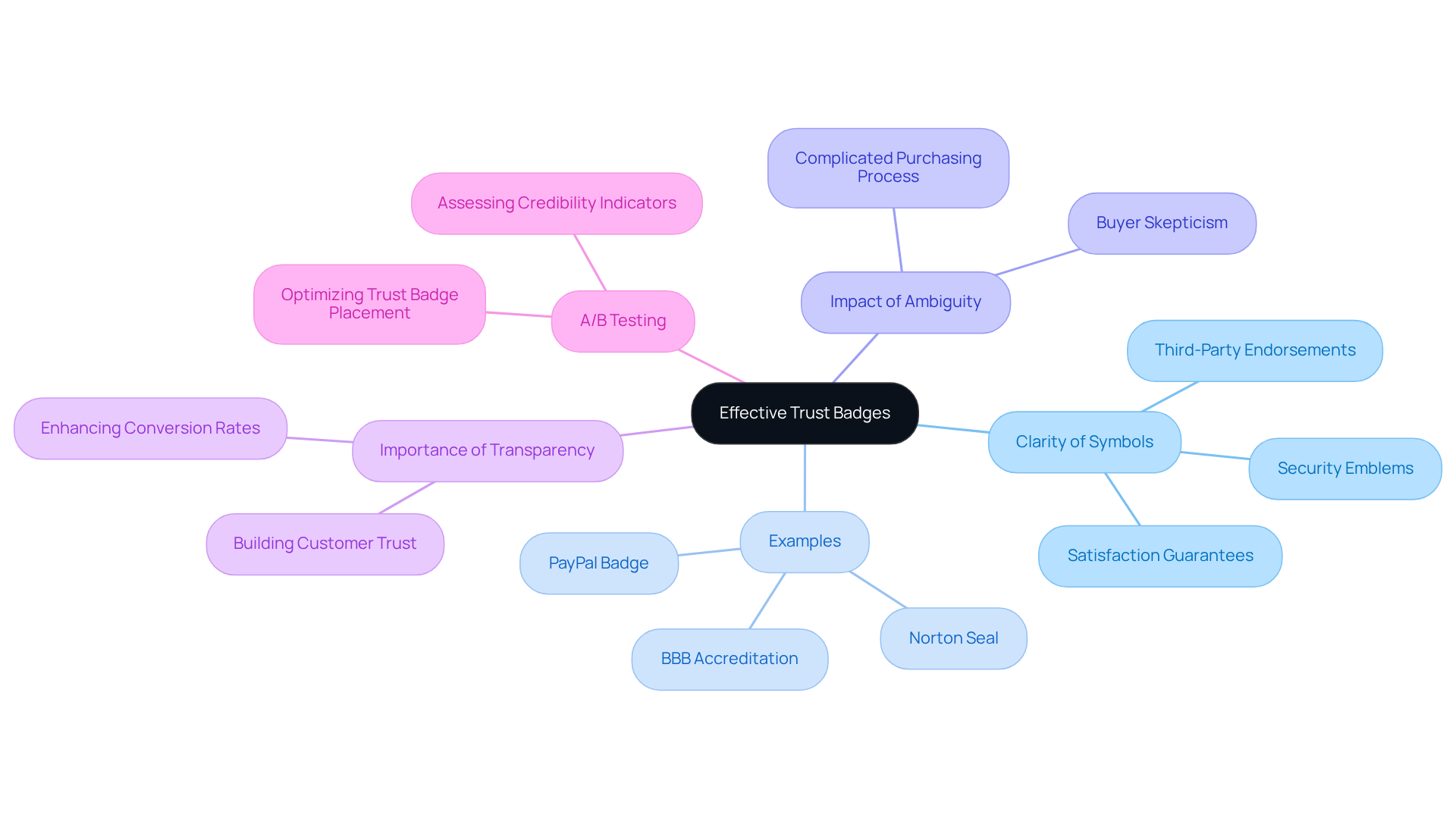
Mistake #5: Displaying Low-Resolution Trust Badges
Displaying low-resolution credibility symbols can significantly undermine a website's professionalism and reliability. High-quality images are essential for sustaining a credible online presence, as they directly affect consumer perception. For example, a small e-commerce company that incorporated an 'As Seen On' section featuring logos from major publications witnessed an impressive ~60% increase in conversion rates. This illustrates how visually appealing assurance symbols can enhance brand reputation and bolster customer confidence through the use of a trusted badge.
Research indicates that the clarity of credibility symbols correlates with perceived professionalism; low-quality images can sow doubt among potential clients. In fact, 75% of visitors may abandon a site due to a lack of credibility, highlighting the necessity for high-resolution visuals. Design experts emphasize that assurance symbols, such as the trusted badge, should not only be clear but also strategically positioned to maximize their effectiveness, particularly near call-to-action buttons.
Brands like Voices.com have successfully leveraged high-quality media logos, achieving a remarkable +400% increase in sign-ups by prominently displaying these symbols on their homepage. Such instances underscore that investing in a trusted badge is vital for fostering consumer confidence and enhancing conversions.
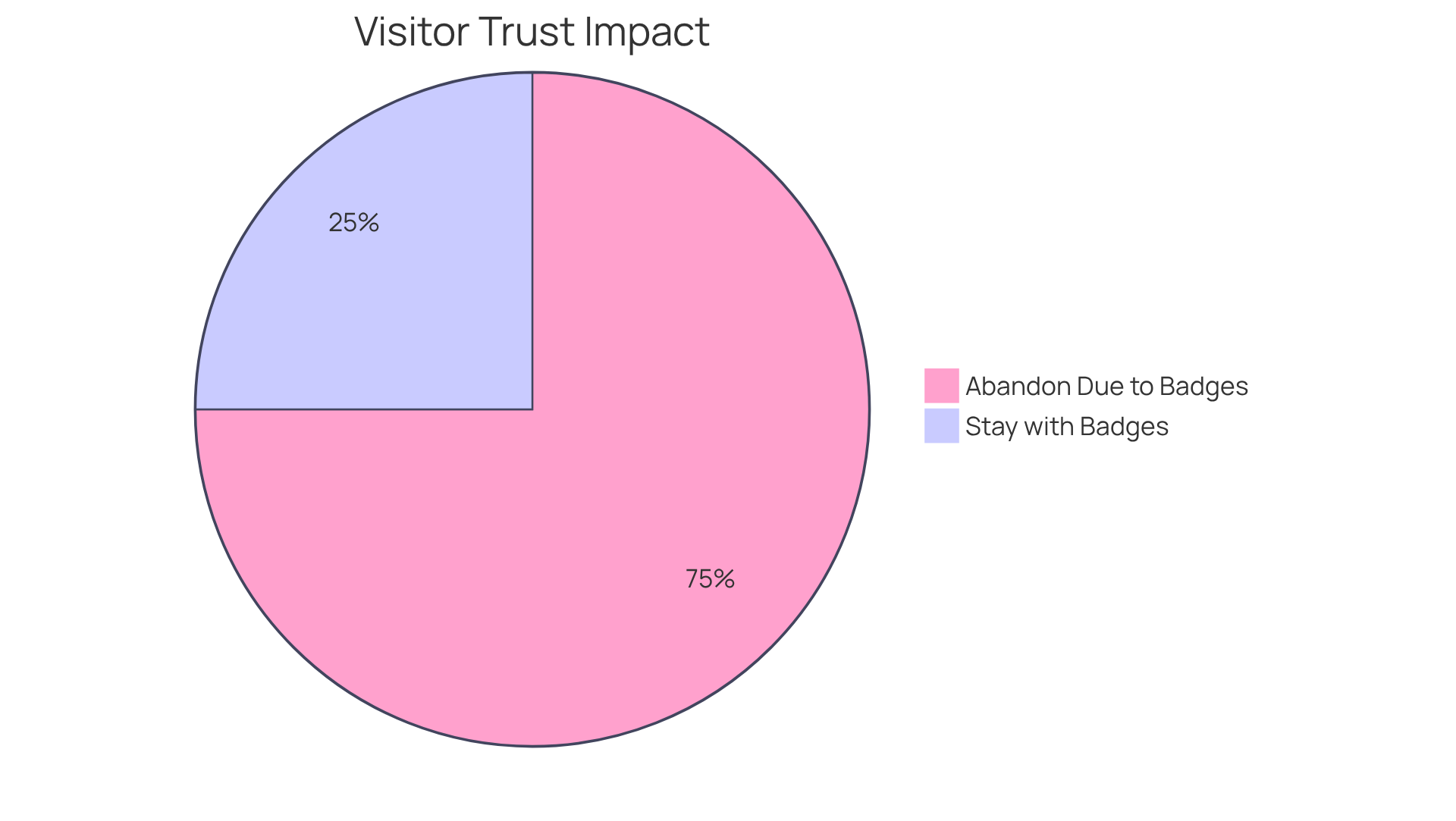
Mistake #6: Creating Unrecognized Custom Trust Badges
Developing unrecognized personalized trust symbols can confuse clients and foster doubt. While personalized emblems can be effective, they must resonate with the target audience and convey clear meaning. Brands should prioritize the use of a trusted badge, which consists of familiar and recognized symbols that consumers can easily identify.
Research indicates that 75% of users may abandon a website due to a lack of credibility, highlighting the necessity of employing a trusted badge as an assurance symbol. Furthermore, an overabundance of certification symbols can overwhelm customers and diminish perceived authenticity, making it essential to select and position them judiciously. You should only use a trusted badge from reputable companies if you meet the criteria necessary to maintain credibility.
As Yusuf Shurbaji articulates, "Trust symbols are unique, identifiable icons that promptly provide users a reason to have confidence in your company." Therefore, when creating assurance symbols, brands must prioritize clarity and recognition to effectively enhance consumer confidence and drive conversions.
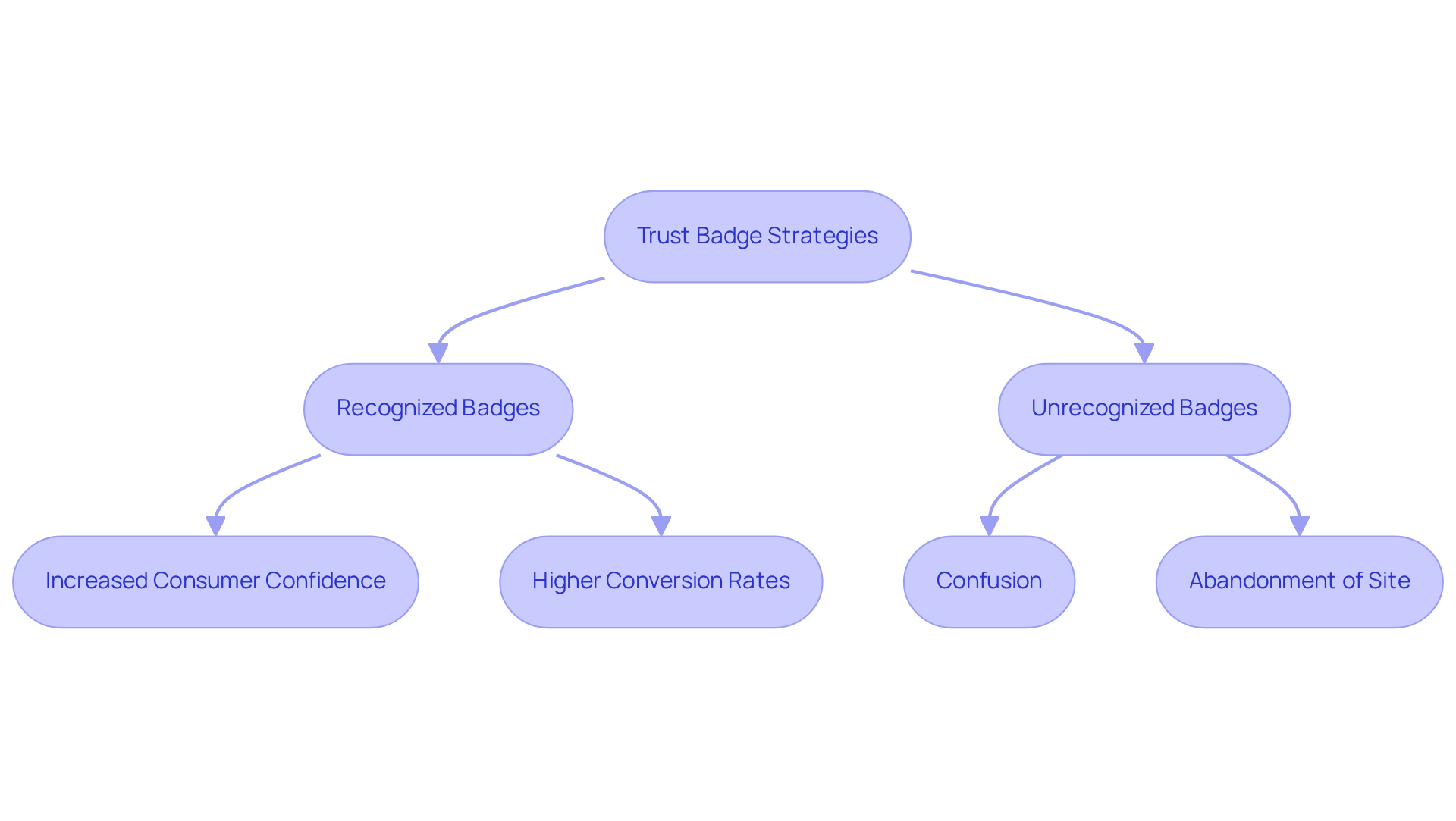
Mistake #7: Using Outdated Trust Badges
Utilizing obsolete security symbols conveys a sense of disregard, significantly undermining customer confidence. Research indicates that 61% of consumers have abandoned purchases due to the absence of trusted badges, underscoring the vital role these symbols play in purchasing decisions.
E-commerce specialists emphasize the necessity for companies to regularly evaluate and refresh their credibility symbols to accurately represent current certifications and endorsements. For instance, companies that have rejuvenated their assurance symbols report enhanced conversion rates, demonstrating the direct correlation between updated emblems and client confidence.
To keep credibility symbols current and relevant, companies should implement a systematic review process and conduct A/B testing on symbol placements, ensuring all symbols are prominent and accurately reflect the organization's commitment to security and transparency. This proactive strategy not only bolsters credibility but also fosters higher conversion rates, as customers are more inclined to complete purchases when they see a trusted badge prominently displayed.
By integrating these credibility symbols into a comprehensive Conversion Rate Optimization strategy, as advised by Parah Group, companies can boost profitability and encourage sustainable growth. DTC brand owners must routinely assess and refresh their security symbols to ensure they effectively communicate safety and transparency to consumers.
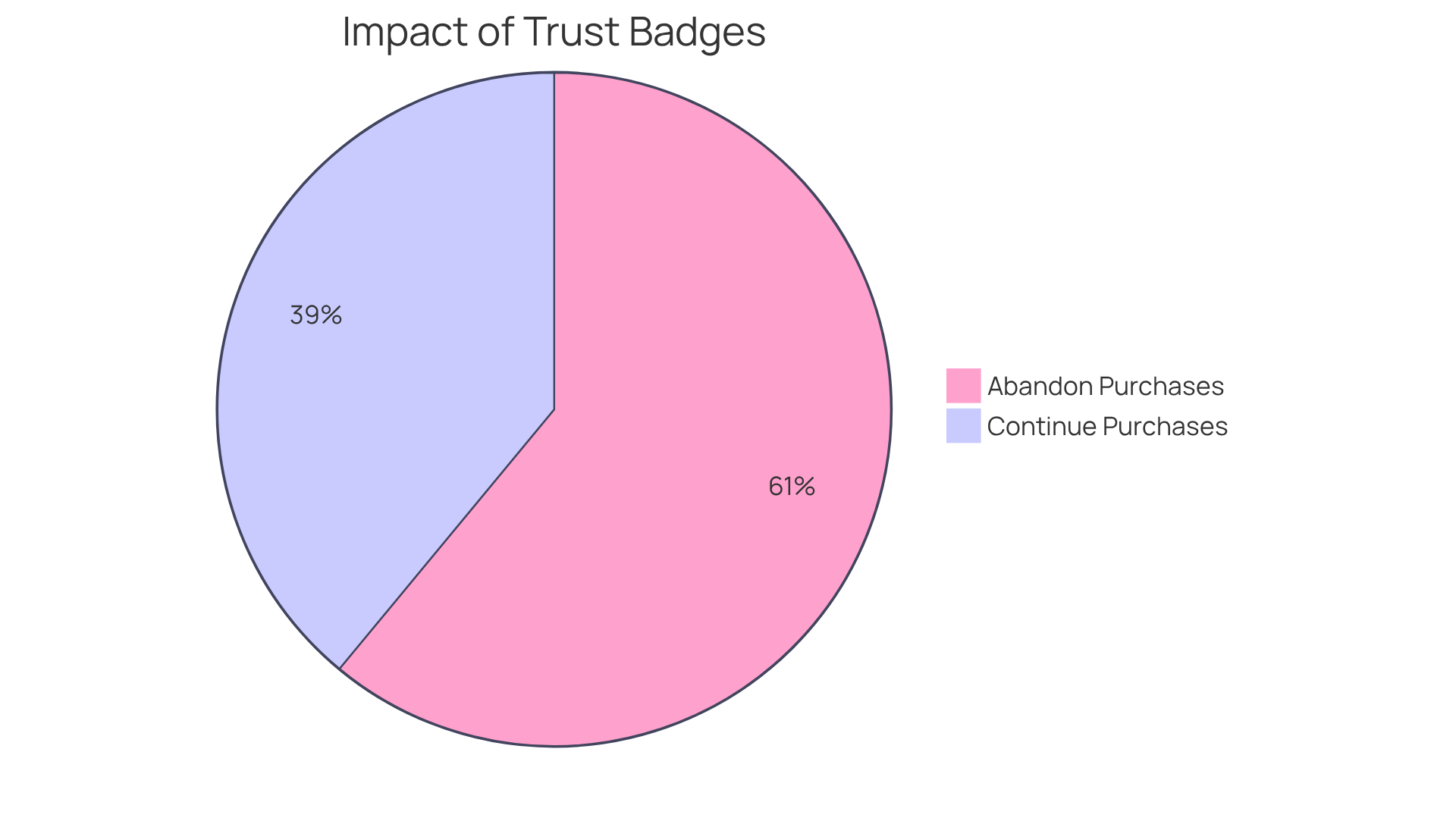
Mistake #8: Overcrowding with Trust Badges
Cluttering a website with numerous assurance symbols can inundate customers, leading to confusion and potential abandonment. To enhance effectiveness, it is essential to select a limited number of key symbols that resonate with your audience. A streamlined and organized presentation not only improves user experience but also drives conversions.
UX specialists emphasize that while assurance symbols are vital, an excess can diminish their impact. As Scott, the Founder and CEO, notes, 'Overdoing it with assurance symbols... can lead to confusion for visitors.'
For instance, companies like Bombas and Warby Parker have successfully simplified their emblem displays, focusing on a few significant symbols—such as Bombas' Certified B Corporation emblem and Warby Parker's Free Shipping & Returns emblem—that bolster their credibility without overwhelming the interface.
Best practices recommend limiting the number of security symbols to two or three strategically positioned icons, particularly on the homepage and checkout sections, to maintain clarity and boost customer confidence. CyberSource advises having no more than two verification symbols on a website. This approach not only streamlines consumers' decision-making processes but also aligns with data indicating that credibility symbols can enhance conversions by up to 42%.
Furthermore, it is crucial to note that 61% of consumers will not make a purchase without visible assurance symbols. To implement these best practices effectively, consider conducting A/B testing on placement options to identify what resonates best with your audience.
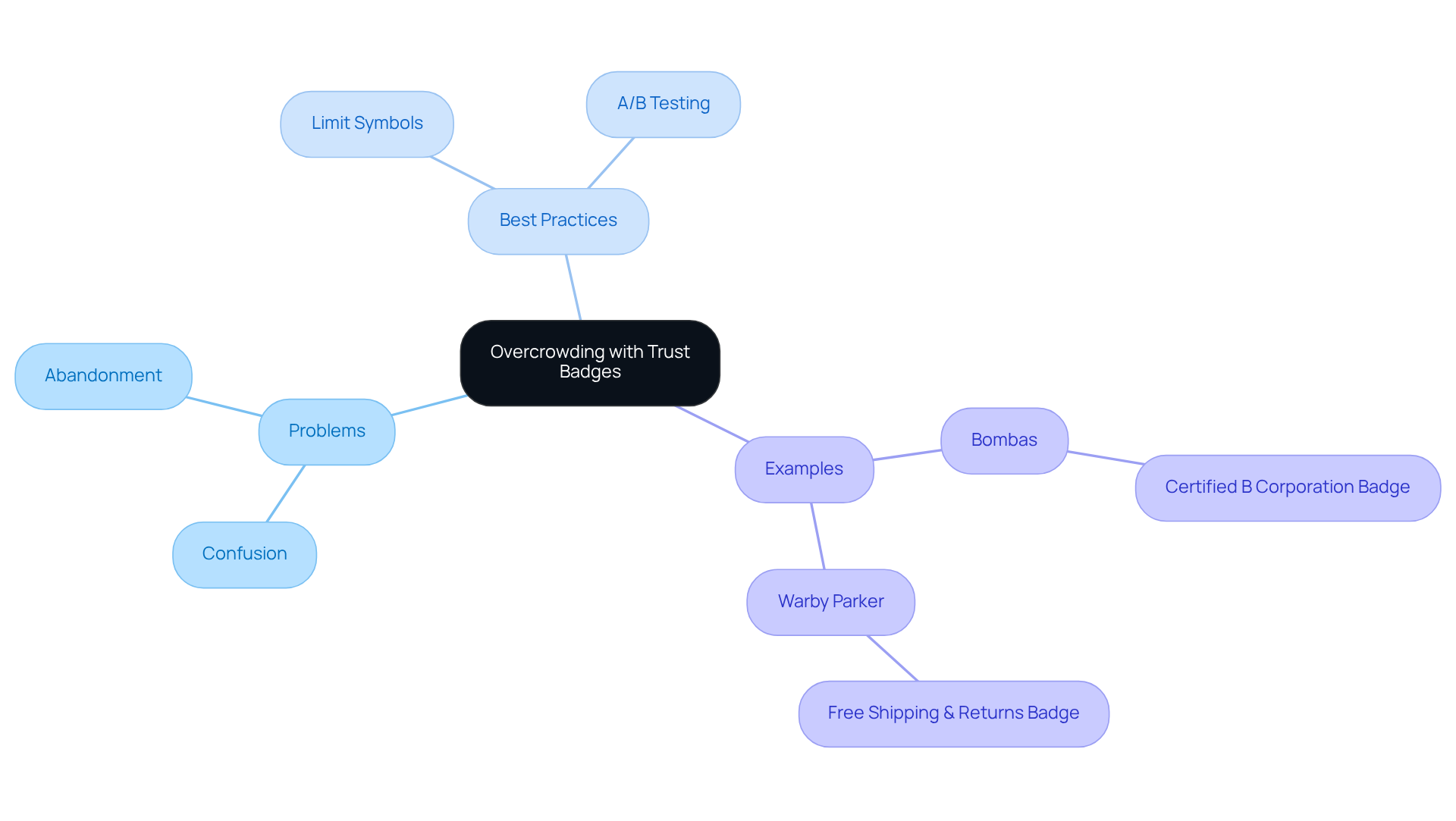
Mistake #9: Inconsistent Trust Badge Display Across Pages
The irregular presentation of approval symbols across different pages can lead to confusion and diminish consumer confidence. To foster a dependable shopping experience, companies must ensure that the trusted badge is consistently positioned and designed throughout their websites. This cohesive approach not only strengthens brand identity but also significantly boosts customer confidence.
Research indicates that 61% of buyers abandon their purchases due to inadequate assurance symbols, underscoring the necessity for consistent visibility. Brands that effectively leverage a trusted badge can experience substantial increases in conversions; for instance, a Verisign Secured emblem led to a remarkable 42% rise in conversions.
Additionally, branding experts emphasize that inconsistency in trust indicators, including the trusted badge, can erode client confidence, making it essential for e-commerce platforms to adhere to best practices. Regular evaluations and adjustments of assurance placements can ensure they remain effective and aligned with customer expectations.
Furthermore, verification icons must operate correctly to instill confidence; these symbols should be distinct, large enough for easy tapping, and responsive across all device sizes. Implementing A/B testing, a critical component of Parah Group's CRO strategies, can help identify the most effective positioning and design for credibility symbols, ultimately enhancing engagement and sales.
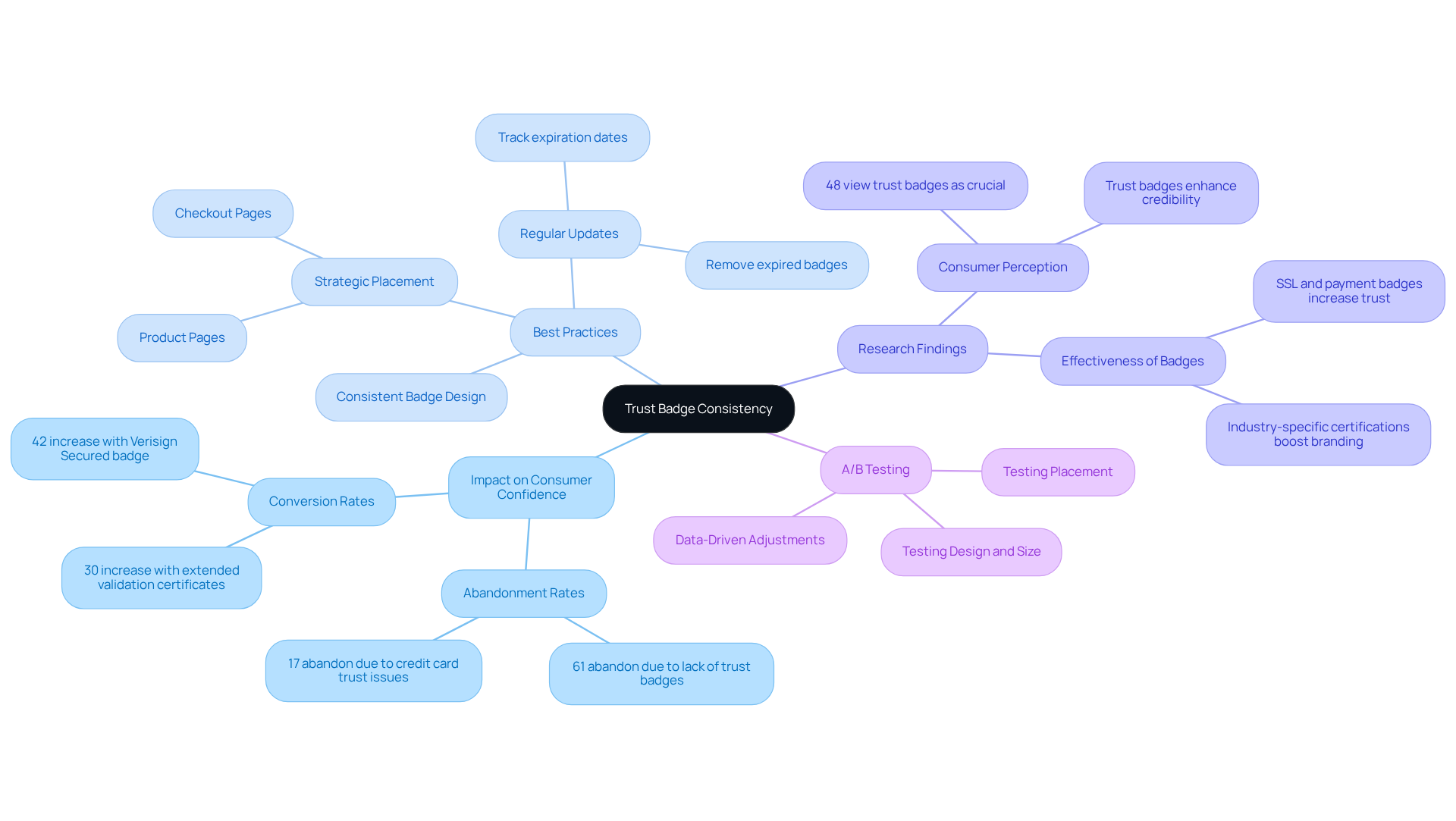
Mistake #10: Neglecting Mobile Trust Badge Optimization
Neglecting mobile optimization for verification symbols can significantly hinder sales opportunities. With mobile devices accounting for over 72.9% of eCommerce sales, it is imperative to ensure that verification symbols are prominently displayed and easily accessible on smaller screens. Experts emphasize that consumers expect seamless, rapid, and intuitive interactions on their smartphones; thus, companies must rigorously assess their mobile designs to guarantee that credibility symbols enhance the user experience rather than detract from it.
For instance, companies like Crutchfield have successfully implemented clean designs that highlight credibility symbols, leading to improved mobile conversion rates. Moreover, research indicates that 53% of mobile users abandon websites that take longer than three seconds to load, underscoring the critical need for fast-loading, mobile-optimized verification symbols.
To maximize the effectiveness of credibility symbols on mobile devices, businesses should focus on:
- Strategic positioning and styling that aligns with their overall design ethos.
- Utilizing responsive layouts that adapt to various screen sizes.
- Ensuring that icons load quickly without cluttering the interface.
By integrating security symbols with additional elements such as customer feedback and transparent return policies, companies can foster a more trustworthy shopping environment, ultimately driving higher conversion rates.

Mistake #11: Failing to Test Trust Badges
Failing to evaluate verification symbols can lead to significant missed opportunities for improvement. Executing A/B testing is crucial for companies to ascertain which symbols resonate most effectively with their audience and enhance conversion rates. Studies indicate that forms featuring credibility symbols experience a 42% increase in conversions compared to those that lack them.
For example, in our case analyses, companies that strategically positioned verification symbols on payment pages witnessed heightened client assurance and improved conversion rates. Regular assessments not only empower companies to refine their strategies but also enhance the effectiveness of their trusted badge.
Conversion optimization specialists assert that thoughtfully placing a trusted badge, especially on payment pages, can substantially bolster buyer trust during critical moments. By consistently evaluating and adjusting the placement and types of symbols, companies can ensure they meet client expectations and address their concerns, ultimately leading to enhanced conversion rates.
Furthermore, companies must remain vigilant regarding the use of current and validated assurance symbols, as outdated or unverified symbols can negatively impact customer confidence. Parah Group's proven strategies in CRO underscore the importance of these elements in driving revenue growth and enhancing profitability for direct-to-consumer companies.
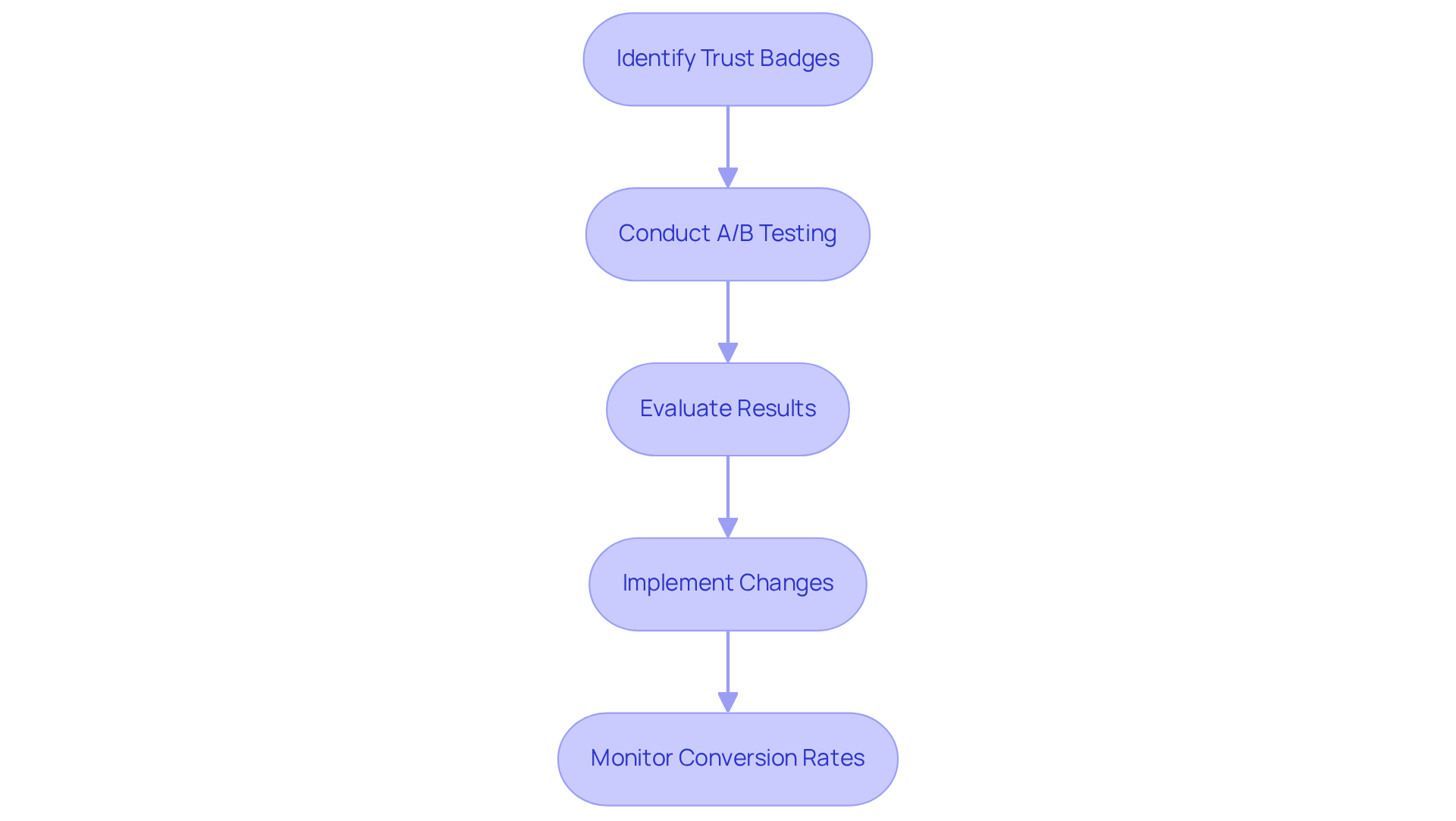
Mistake #12: Using Trust Badges to Mask Business Problems
Relying on assurance symbols to mask fundamental business issues can severely undermine a company's credibility. Instead of using these badges as a mere stopgap, businesses must prioritize addressing the core challenges that affect client confidence. Authenticity and transparency are crucial for fostering enduring relationships with clients.
Research indicates that 81% of consumers need to trust a brand before considering a purchase, underscoring the critical importance of genuine engagement in e-commerce. Companies like XYZ and ABC have faced backlash for overly depending on credibility symbols, often discovering that superficial solutions fail to tackle more significant issues, such as poor product quality or inadequate service.
As experts in business ethics emphasize, true confidence is built on a foundation of honesty and reliability, rather than merely the presence of assurance symbols. Therefore, companies should focus on creating authentic experiences that resonate with their audience, ensuring that credibility symbols enhance rather than replace genuine efforts to build client trust.

Mistake #13: Poor Placement of Trust Badges
The strategic arrangement of endorsement symbols is crucial for their effectiveness; improper positioning can significantly diminish their impact. To enhance customer interaction and increase conversion rates, companies must strategically position trusted badges in prominent locations, particularly near call-to-action buttons and checkout forms.
Research indicates that a trusted badge can elevate online sales by as much as 32% when placed appropriately, while 61% of consumers abandon transactions if they do not see credibility logos on a website. Experts assert that strategic placement at key decision points—such as above the fold and near payment fields—can serve as a trusted badge that yields the most substantial results.
For instance, a case study revealed that a company experienced a 16% increase in total conversions simply by including a verification symbol beneath the checkout price. Furthermore, limiting the display of symbols to only the most relevant ones can prevent overwhelming visitors, ensuring that these symbols serve as a trusted badge to foster reliability and credibility.
By grasping the intricacies of placement, brands can significantly enhance their conversion rates and cultivate a more trustworthy shopping experience.
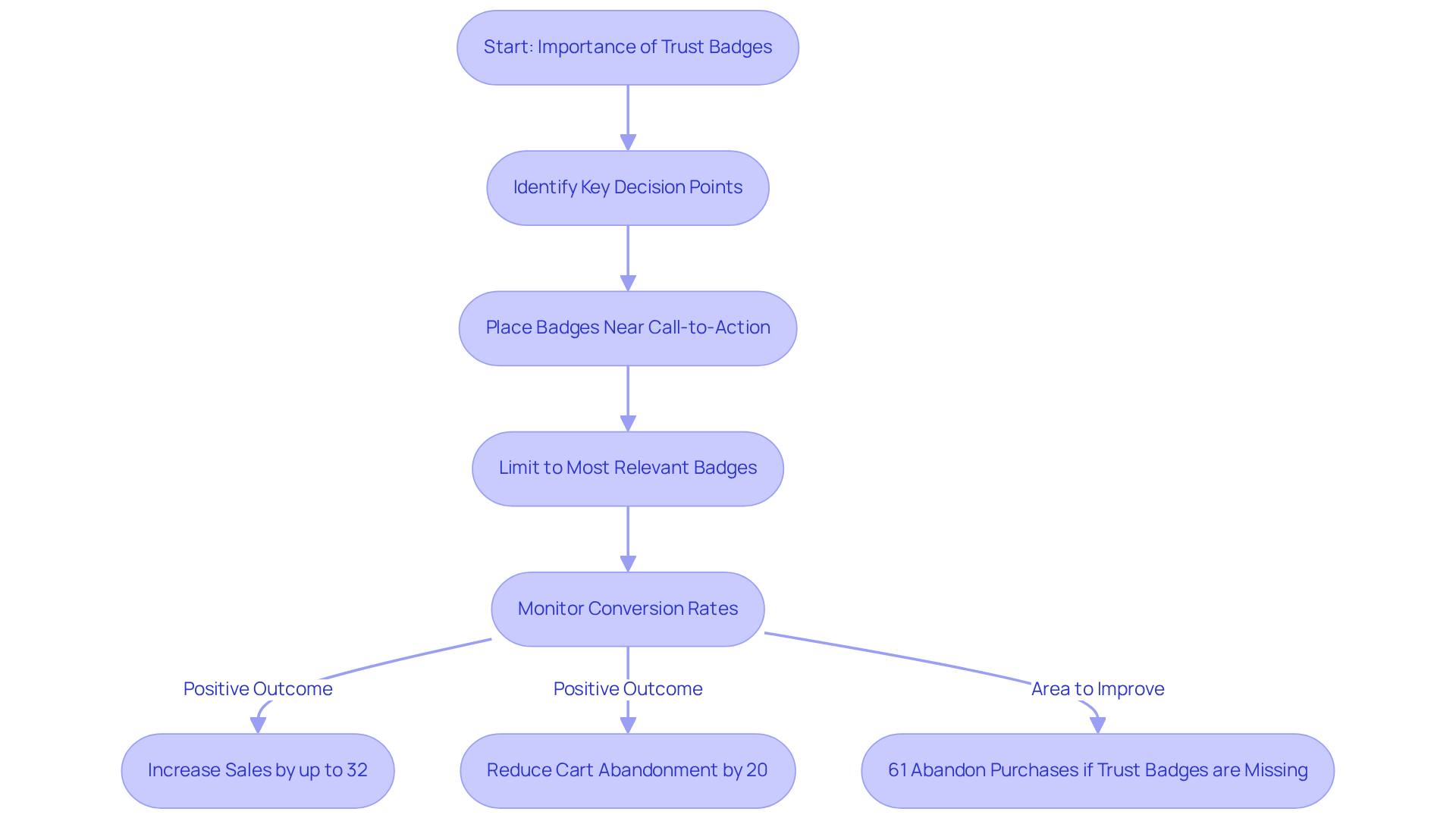
Mistake #14: Ignoring Trust Badge Effectiveness Evaluation
Neglecting the assessment of credibility symbols can result in outdated strategies and missed opportunities for improvement. Conversion Rate Optimization (CRO) is the strategic approach to enhancing your website for increased conversions, effectively transforming more visitors into clients. Brands must leverage analytics and client feedback to continuously evaluate the efficacy of their assurance symbols. This ongoing assessment enables timely adjustments, ensuring that credibility symbols remain relevant and impactful for clients.
For instance, companies that diligently monitor their reputation symbol performance have reported significant improvements in conversion rates, with secure checkout symbols boosting conversions by as much as 32%. Parah Group, a leader in CRO, emphasizes that evaluating the impact of credibility indicators, including a trusted badge, is essential for refining strategies and optimizing ROI; indeed, 61% of consumers are unlikely to purchase without visible credibility symbols.
By analyzing data on client interactions with assurance symbols, brands can identify which symbols resonate most effectively with their audience, facilitating informed decisions to enhance their online credibility. Regular evaluations not only help maintain customer trust but also allow for adaptation to shifting consumer expectations, ultimately driving increased sales and customer loyalty.
Furthermore, ensuring that security symbols are optimized for mobile is crucial, given that a substantial percentage of online shopping occurs on mobile devices. Parah Group's tailored approach and dedication to client needs are reflected in our transformational case studies, which demonstrate how innovative CRO strategies can significantly boost brand profitability through effective trusted badge implementation.
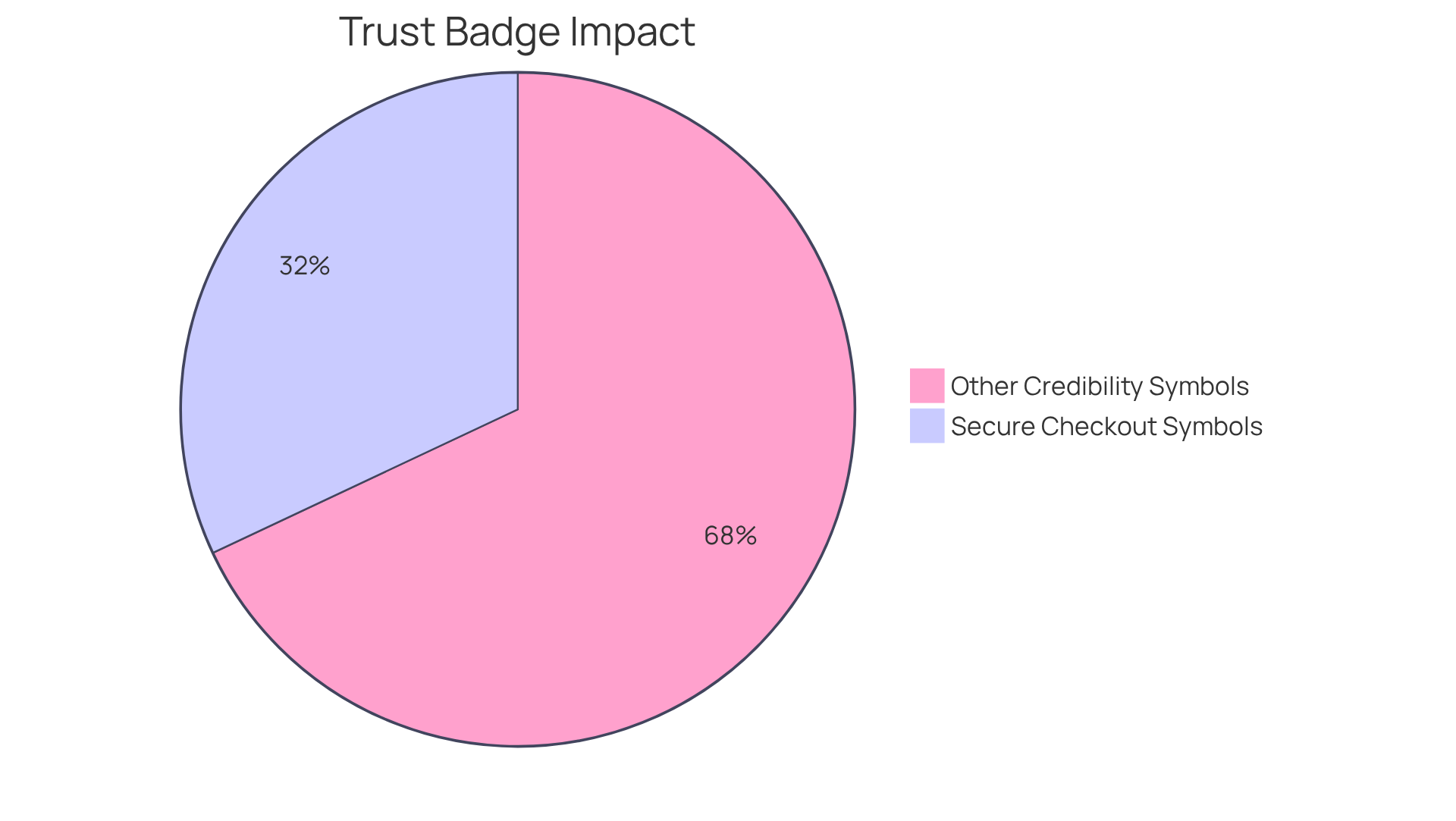
Conclusion
The significance of trusted badges in e-commerce is paramount; they are essential indicators of safety and reliability for consumers. By optimizing the deployment of these symbols, brands can markedly enhance customer confidence and drive conversion rates. However, pitfalls such as unauthorized use, ambiguous messaging, and poor placement can severely compromise their effectiveness, resulting in lost sales and eroded trust.
Key mistakes are highlighted throughout the article, including:
- The dangers of utilizing unverified or outdated badges
- The detrimental effects of overcrowding
- The imperative for consistency across pages
Each of these factors plays a critical role in shaping consumer perception and decision-making, underscoring the necessity for brands to adopt best practices in trust badge strategies. By ensuring that badges are clear, high-quality, and strategically positioned, businesses can foster a more trustworthy online shopping environment.
Ultimately, cultivating a culture of authenticity and transparency is vital for establishing enduring customer relationships. Brands must not only concentrate on the visual elements of trust symbols but also commit to addressing any underlying business challenges that may undermine consumer confidence. Regular assessments and updates of trust badge strategies will not only boost conversions but also reinforce a brand's reputation in the competitive e-commerce landscape. Embracing these practices can lead to heightened customer loyalty and sustainable growth.
Frequently Asked Questions
What is the purpose of a trusted badge on e-commerce sites?
A trusted badge serves as a visual indicator of safety and reliability, significantly influencing consumer behavior and increasing conversion rates.
How much can conversion rates increase with the use of a trusted badge?
Research indicates that forms featuring a trusted badge can achieve up to 42% higher conversion rates than those without.
What percentage of customers abandon transactions if they do not see a trusted badge?
61% of customers abandon transactions if they do not encounter a trusted badge on a site.
Can you provide an example of a brand that benefited from using a trusted badge?
Holabird Sports experienced a 16% increase in conversions after integrating the trusted badge from TrustedSite.
What types of trusted badges should brands consider using?
Brands should thoughtfully select and position trusted badges such as SSL certificates and payment method logos to alleviate customer concerns regarding data protection and payment safety.
What are the most significant verification symbols for an e-commerce store?
The most significant verification symbols are those focused on website cybersecurity and secure checkout procedures.
How many insignias should be used in a single area to maintain a professional appearance?
It is recommended to utilize no more than three insignias in a single area to prevent overcrowding.
What are the consequences of displaying unauthorized trust badges?
Displaying a trusted badge without authorization can undermine a company's credibility, lead to legal repercussions, and result in reputational damage.
What should companies do to avoid using unauthorized trust badges?
Companies should ensure that all trusted badges displayed are obtained through legitimate means, establish internal policies, educate employees, and perform regular audits.
Why is it important to use verified trust badges?
Utilizing verified trust symbols enhances credibility and provides buyers with assurance regarding the safety and authenticity of their shopping experience.
What happens if brands fail to link trust badges to their providers?
Failing to connect verification symbols to their corresponding suppliers can diminish their impact and consumer trust.
How can clickable verification symbols benefit brands?
Clickable verification symbols empower customers to confirm authenticity, which can lead to significant increases in conversion rates.
What should brands do to ensure the effectiveness of their assurance symbols?
Brands should ensure that all assurance symbols are clickable, adequately sized, and responsive across all devices, while regularly reviewing their placement on key pages.
FAQs











